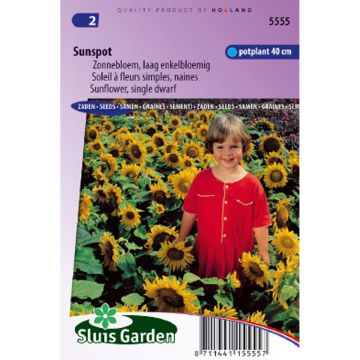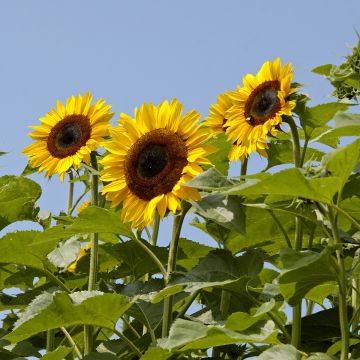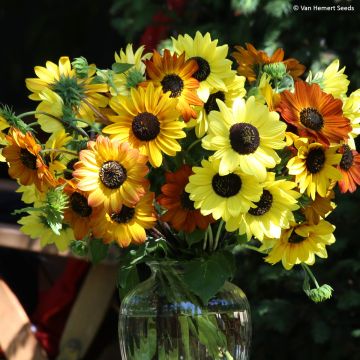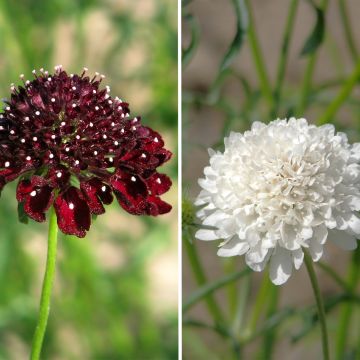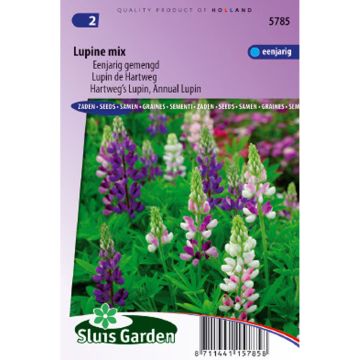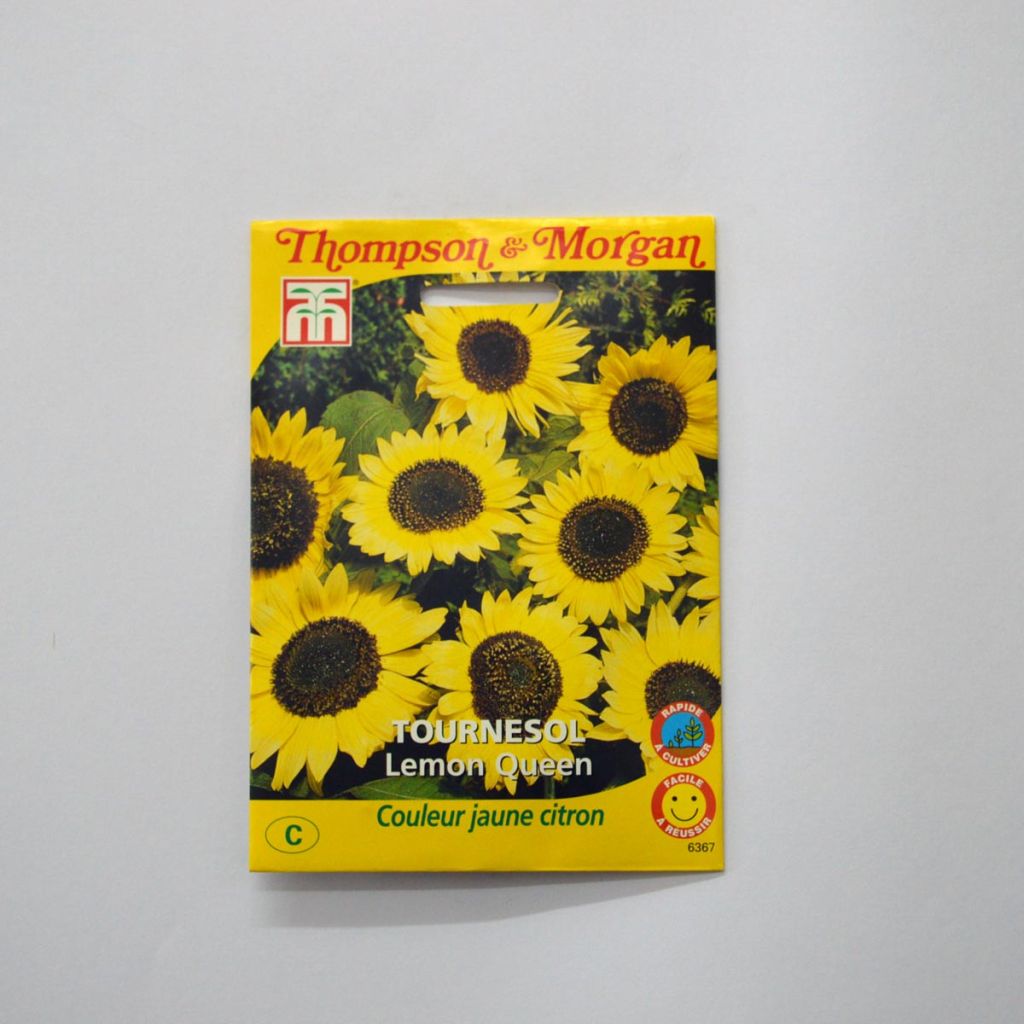

Graines de Tournesol Lemon Queen - Helianthus annuus
Sunflower Lemon Queen seeds - Helianthus annuus
Helianthus annuus Lemon Queen
Sunflower, Common Sunflower
This item cannot be shipped to the selected country
Dispatch by letter from €3.90
Delivery to Corse prohibited
More information
Schedule delivery date,
and select date in basket
This plant carries a 6 months recovery warranty
More information
We guarantee the quality of our plants for a full growing cycle, and will replace at our expense any plant that fails to recover under normal climatic and planting conditions.
Seed-only orders are dispatched by sealed envelope. The delivery charge for seed-only orders is €3.90.
Delivery to Corse prohibited: UE law prohibits the import of this plant from mainland France to Corse as part of the fight against Xylella fastidiosa. Please accept our sincere apologies.
More information
Does this plant fit my garden?
Set up your Plantfit profile →
Description
The 'Lemon Queen' Sunflower, whose botanical name is Helianthus annuus 'Lemon Queen', is an annual plant with rapid growth. Its numerous floral stems reach between 150 and 180cm (59 and 71in) and produce about twenty flowers per plant throughout the flowering season.
From July to September, this Garden Sunflower presents a magnificent lemon yellow flowering with a black centre.
Its flowers resemble giant daisies with a diameter of 10 to 12cm (4 to 5in). Its flowering inevitably catches the eye of visitors. The numerous stems will provide you abundantly with the flowers you need to create your splendid summer bouquets.
This magnificent flowering spreads from July to September. However, we recommend staggered sowing to enjoy beautiful and young flowers regularly and until autumn.
The leaves, 5 to 10cm (2 to 4in) in size, cordate or lanceolate and dentate, are medium green in colour.
To enjoy your Sunflower bouquets for a longer time, follow these tips:
- Cut the flowers in the morning just after they have opened. Use a knife that has been thoroughly cleaned beforehand.
- Remove the leaves from the bottom, leaving only 2 or 3 leaves below the flower.
- Change the water in the vase with fresh water every day.
In the garden, sow the 'Lemon Queen' Sunflower at the back of a flower bed, where it will majestically dominate the other flowers and illuminate the bed with its tender colour. Sunflowers love sunny spots and rich, fresh soil.
Before flowering, the plant optimizes its growth by following the course of the sun. This phenomenon, called heliotropism, has given rise to some of its common names: Héliotrope, Tournesol, Sunflower, Garden Sun.
Sunflower in the kitchen:
The buds, petals, and seeds are edible. Add a few petals to a green salad for colour contrast and their nutty taste. The green buds can be blanched and then sautéed in garlic butter. Their flavor is similar to that of Jerusalem artichoke. The flesh of the seed can be eaten raw or roasted.
An ecological asset:
Throughout summer, the nectar-rich flowers of Sunflowers attract pollinating insects and butterflies to your garden. This is a great way to improve the ecosystem of your garden and promote the production of fruits and vegetables in your vegetable patch.
The oil-rich seeds are particularly appreciated by birds (Parrots, Tits, etc.). At the end of flowering, harvest them to make some creatures happy during the winter scarcity.
Report an error about the product description
Flowering
Foliage
Plant habit
Botanical data
Helianthus
annuus
Lemon Queen
Asteraceae
Sunflower, Common Sunflower
Cultivar or hybrid
Other Sunflower seeds
Planting and care
The Sunflower can be sown:
- either in March-April, in pots under shelter, for the preparation of young plants that can be placed in your flowerbeds after the last frost.
- Or from May to June, after the frost, directly in place. In a sunny spot in your garden. In order to enjoy beautiful fresh flowers all season, we recommend staggering your sowings as much as possible.
Sow the Sunflower from March to April in pots. Sow your seeds in groups of 2 at a depth of 1cm (0.3in). Use good quality potting soil that you will sift on the surface to bind the seed to its substrate. Before sowing, lightly press down the soil with a board. Cover the seeds by sprinkling soil or vermiculite on top, lightly press down and water generously with a fine rain. Place your pots in light, without direct sunlight, at a temperature of 20°C (68°F) to 25°C (77°F). Lower the temperature at night to 17°C (62.6°F) to create a beneficial alternation for germination. The seeds will take 21 days to germinate. Keep the soil moist but not overly wet during growth.
20 days after the appearance of the young plants, remove the weakest shoot to keep only one per pot. To encourage branching of the main stem, you can cut the terminal bud when the plant has developed its fifth leaf.
15 days before their final planting, start acclimatizing them gradually to a temperature of 15°C (59°F).
By the end of May or early June, the temperature in the garden will be warm enough to plant your young plants. Choose a sunny location. Add a good shovelful of compost to each planting hole. Space your plants 60cm (24in) apart.
The vigorous growth of the Sunflower will require regular watering. When the plant reaches about 1m (3ft), watering can be stopped and it can rely on rainwater even if it is scarce.
It takes 75 days between sowing and flowering.
Protect your seedlings from attacks by snails and slugs, which are fond of these young plants. By sowing chives near your sunflowers, you will keep aphids away from them.
Sowing period
Intended location
-
, onOrder confirmed
Reply from on Promesse de fleurs
Flower seeds
Haven't found what you were looking for?
Hardiness is the lowest winter temperature a plant can endure without suffering serious damage or even dying. However, hardiness is affected by location (a sheltered area, such as a patio), protection (winter cover) and soil type (hardiness is improved by well-drained soil).

Photo Sharing Terms & Conditions
In order to encourage gardeners to interact and share their experiences, Promesse de fleurs offers various media enabling content to be uploaded onto its Site - in particular via the ‘Photo sharing’ module.
The User agrees to refrain from:
- Posting any content that is illegal, prejudicial, insulting, racist, inciteful to hatred, revisionist, contrary to public decency, that infringes on privacy or on the privacy rights of third parties, in particular the publicity rights of persons and goods, intellectual property rights, or the right to privacy.
- Submitting content on behalf of a third party;
- Impersonate the identity of a third party and/or publish any personal information about a third party;
In general, the User undertakes to refrain from any unethical behaviour.
All Content (in particular text, comments, files, images, photos, videos, creative works, etc.), which may be subject to property or intellectual property rights, image or other private rights, shall remain the property of the User, subject to the limited rights granted by the terms of the licence granted by Promesse de fleurs as stated below. Users are at liberty to publish or not to publish such Content on the Site, notably via the ‘Photo Sharing’ facility, and accept that this Content shall be made public and freely accessible, notably on the Internet.
Users further acknowledge, undertake to have ,and guarantee that they hold all necessary rights and permissions to publish such material on the Site, in particular with regard to the legislation in force pertaining to any privacy, property, intellectual property, image, or contractual rights, or rights of any other nature. By publishing such Content on the Site, Users acknowledge accepting full liability as publishers of the Content within the meaning of the law, and grant Promesse de fleurs, free of charge, an inclusive, worldwide licence for the said Content for the entire duration of its publication, including all reproduction, representation, up/downloading, displaying, performing, transmission, and storage rights.
Users also grant permission for their name to be linked to the Content and accept that this link may not always be made available.
By engaging in posting material, Users consent to their Content becoming automatically accessible on the Internet, in particular on other sites and/or blogs and/or web pages of the Promesse de fleurs site, including in particular social pages and the Promesse de fleurs catalogue.
Users may secure the removal of entrusted content free of charge by issuing a simple request via our contact form.
The flowering period indicated on our website applies to countries and regions located in USDA zone 8 (France, the United Kingdom, Ireland, the Netherlands, etc.)
It will vary according to where you live:
- In zones 9 to 10 (Italy, Spain, Greece, etc.), flowering will occur about 2 to 4 weeks earlier.
- In zones 6 to 7 (Germany, Poland, Slovenia, and lower mountainous regions), flowering will be delayed by 2 to 3 weeks.
- In zone 5 (Central Europe, Scandinavia), blooming will be delayed by 3 to 5 weeks.
In temperate climates, pruning of spring-flowering shrubs (forsythia, spireas, etc.) should be done just after flowering.
Pruning of summer-flowering shrubs (Indian Lilac, Perovskia, etc.) can be done in winter or spring.
In cold regions as well as with frost-sensitive plants, avoid pruning too early when severe frosts may still occur.
The planting period indicated on our website applies to countries and regions located in USDA zone 8 (France, United Kingdom, Ireland, Netherlands).
It will vary according to where you live:
- In Mediterranean zones (Marseille, Madrid, Milan, etc.), autumn and winter are the best planting periods.
- In continental zones (Strasbourg, Munich, Vienna, etc.), delay planting by 2 to 3 weeks in spring and bring it forward by 2 to 4 weeks in autumn.
- In mountainous regions (the Alps, Pyrenees, Carpathians, etc.), it is best to plant in late spring (May-June) or late summer (August-September).
The harvesting period indicated on our website applies to countries and regions in USDA zone 8 (France, England, Ireland, the Netherlands).
In colder areas (Scandinavia, Poland, Austria...) fruit and vegetable harvests are likely to be delayed by 3-4 weeks.
In warmer areas (Italy, Spain, Greece, etc.), harvesting will probably take place earlier, depending on weather conditions.
The sowing periods indicated on our website apply to countries and regions within USDA Zone 8 (France, UK, Ireland, Netherlands).
In colder areas (Scandinavia, Poland, Austria...), delay any outdoor sowing by 3-4 weeks, or sow under glass.
In warmer climes (Italy, Spain, Greece, etc.), bring outdoor sowing forward by a few weeks.





































